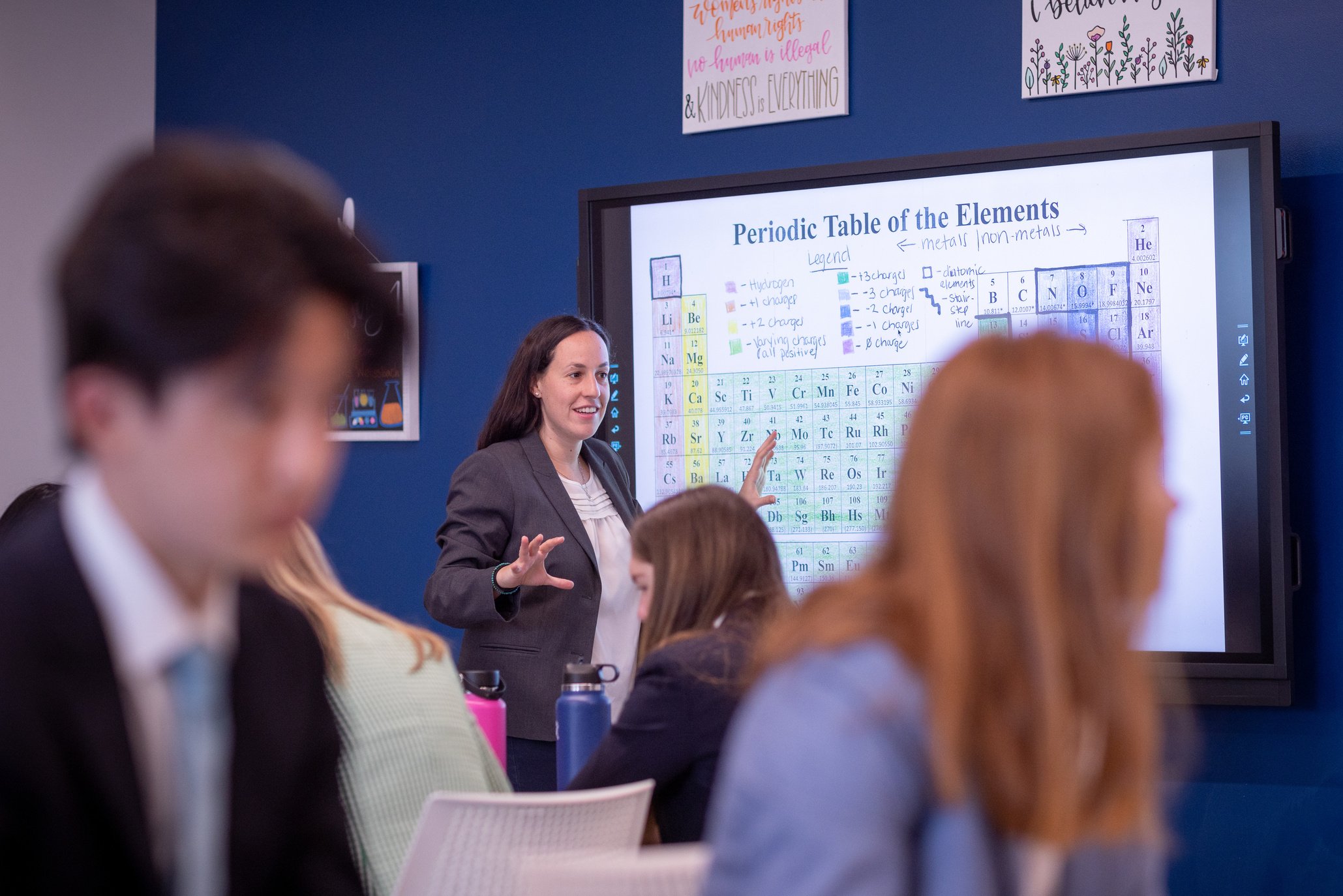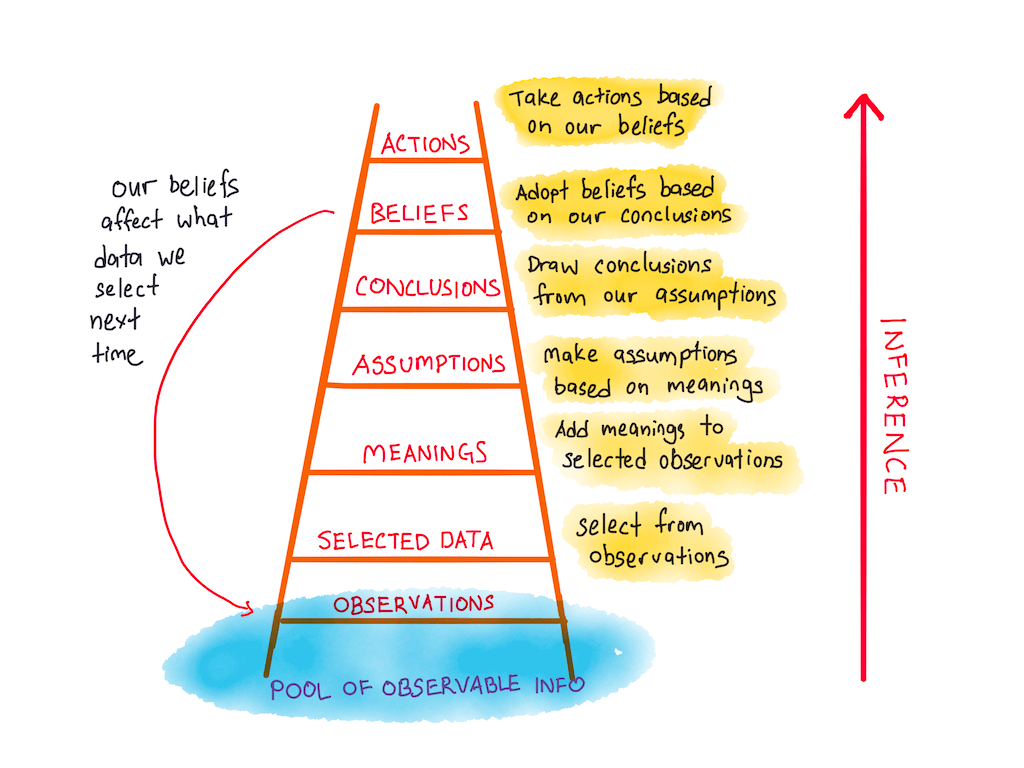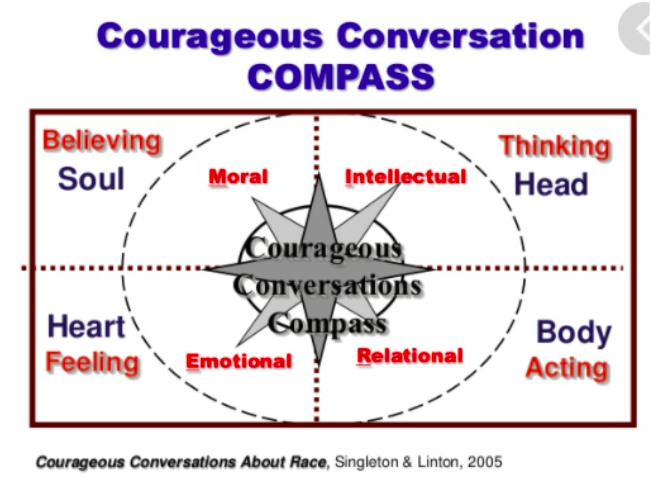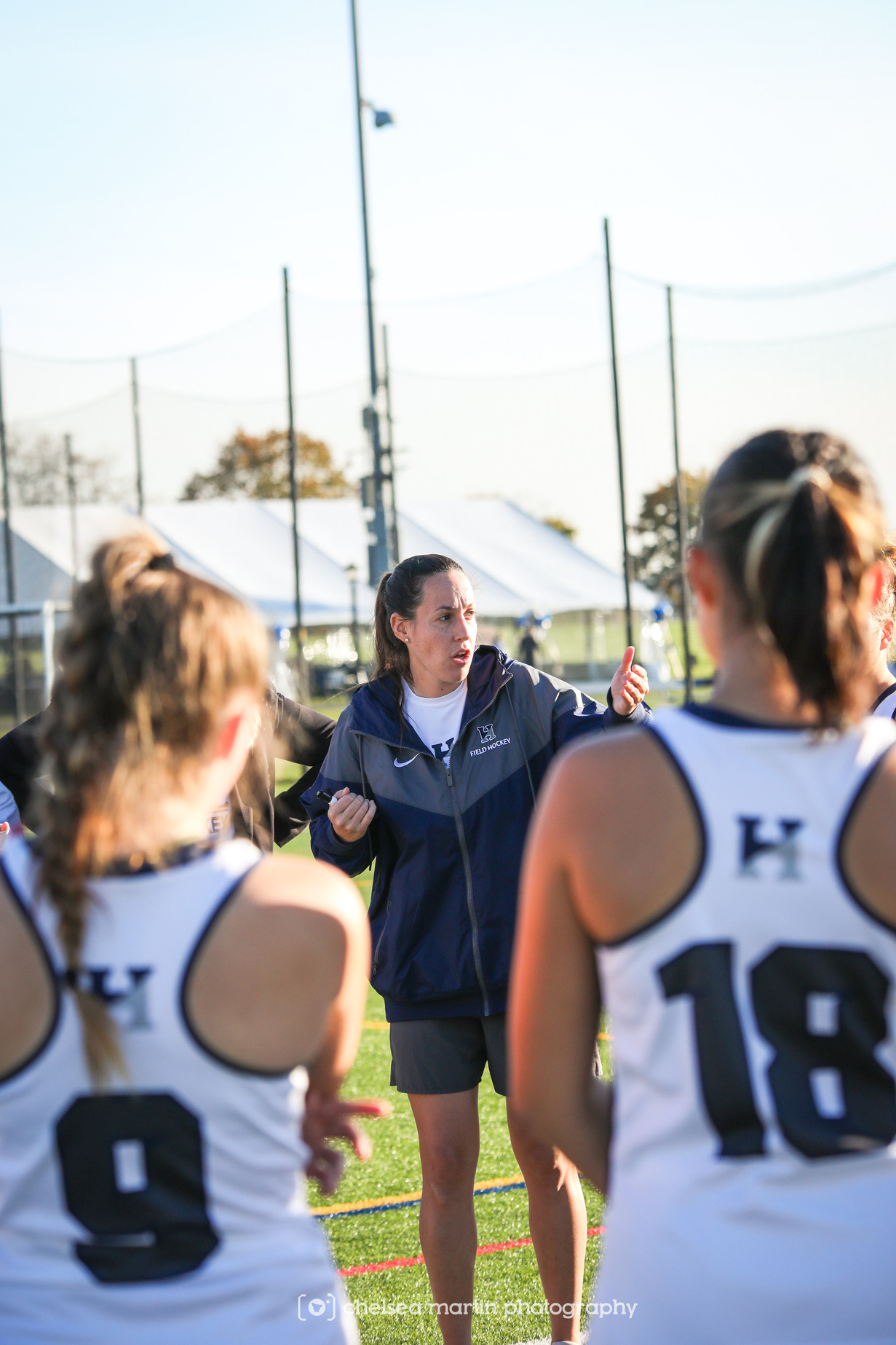
Six Word Leadership Memoir
Six Word leadership memoir
Thoughtful intentions; Passionate pursuits; Eagerly learning.
Thoughtful Intentions
As a school leader, I was moved by Marla Tabaka’s Inc. article that described the difference between setting goals and setting intentions. While the value of goal setting is clear, setting and living intentions as a leader “allows you to focus on who you are in the moment, to recognize and live your values, and to raise your emotional energy, which in turn raises your physical energy.”
Passionate Pursuits
I am a passionate person and in turn I am a passionate leader. I am to be emotionally intelligent and not driven by emotion. I pursue my personal and professional goals endlessly with unmatched fervor, even at the expense of my own wellbeing at times. As a leader, continuing to passionately pursue my dreams in pursuit of excellence is something I will never stop doing.
Eagerly Learning
The day I stop learning is the day I stop leading. As a leader, I must be a learner. I must be eager to seek out knowledge, quick to ask for advice, and be open to feedback. I am hungry for opportunities, challenges, and moments that will expand my abilities, skill sets, and the way I think. These moments for growth are abundant and I am ready to soak up all that I can.

Slow down at times, speed up when necessary.
Leadership can be unpredictable and challenging. Knowing what the right thing to say or do requires practice, intentionality and thoughtfulness. Leadership is being able to read a situation and know what is needed to bring people along together and get the work done. When faced with a challenging moment, it’s essential that leaders choose not to act on behalf of themselves but rather on behalf of their communities. In fact, the most effective leaders understand the need to create buy-in and bring those they serve with them. Leaders must embark on this journey carefully, knowing when to slow down and when to speed up.
At times, we must step on the brake, slow down, and listen before doing. This has been a growth edge for me in my leadership practice because I am very much a doer. I’ve found throughout my leadership journey, that being present and listening actively shows the people I serve that, as a leader, I understand the value in hearing where my people and my community stand. Understanding where my community is requires “perspective taking” as Nigel Furlongue, current Head of School at Montclair Kimberley Academy, mentioned during our Strategic Marketing course in the Summer of 2022. In his experience, Nigel shared that “we often have more time than we think”. And while Nigel in the moment was specifically referring to internal and external school communications, I believe this is applicable to our decision making as leaders. Leaders should intentionally slow down and work to focus and understand the importance of what needs to be done rather than when it needs to get done.
And while effective leadership may require us to slow down occasionally, leaders also need to have the ability to quickly move people to action. In order to quickly mobilize a community, leaders must show people that they matter first and foremost. Showing people they are seen, valued, and heard is not a quick process. Because it takes time, intentionally and consistently acting with care and awareness each day allows leaders to move quickly and efficiently when obligated to do so. Pressing on the gas pedal in the right moments is a skill learned through experience.
Ultimately, leadership is learning how to navigate the speed limit of the path you’re on. At times, slowing down, planting seeds, and allowing them time to grow is what’s needed. At other times, speeding up and choosing to quickly and thoughtfully move people to action might be what’s necessary in the moment to carry the school forward. Knowing when to step on the brake and push on the gas pedal is a delicate skill that demands leaders understand their community, their students, and the people they serve.
Be about what you say you’re about.
Leadership is more than a set of values, beliefs, and ideals. Leadership is how we put all of which we know and believe into action. Simply sharing with others what you stand for as a leader is not enough to build trust and develop meaningful relationships. Instead, leadership demands our core values are present in every moment in order to show we are the person that we say we are.
During Head of School Ann Klotz’s time with our cohort in the Summer Session of 2022, she shared that her number one rule in leadership that she’s learned in her time at Laurel is to “be authentic”. Choosing to act in a way that is guided and informed by our value system allows leaders to show up authentically in all that they do. Authentically engaging with others promotes the development of meaningful relationships. As a leader, building meaningful relationships is at the heart of what I am passionate about and love to do. Authentic leaders are more easily able to build relationships centered on honesty, trust, and respect. Acting genuinely, in accordance with our guiding principles and values, allows the people we serve to see that we care for them.
Yet it is in moments of challenge where we must act in alignment with who we say we are. These moments, the ones of frustration, exhaustion, confusion, and uncertainty, are the true tests of a leader. Moreover, how we act in moments when our values or beliefs feel compromised contribute to how our community views us as a leader. No leader can be expected by their community to act flawlessly in every difficult situation. Leaders are allowed to make mistakes (and the best ones do). Leaders are allowed to experience moments of failure (and the best ones do). How we act in these moments say more about who we are as leaders than we could ever put words to. I’ve found in my leadership practice that the best path forward in those times should be centered around admitting shortcomings, being vulnerable, and partnering with others to problem solve. The leaders who remain authentic and true to their values during these challenging moments are the ones who find ways to overcome adversity with the genuine support of their community.
Acting in alignment with who we say we are as leaders is paramount in nurturing and maintaining the trust and belief of our community. As the age old saying goes, ‘If you’re going to talk the talk, you need to walk the walk’. Leadership is walking the walk every day in every moment together.
Show people they matter.
I’ve learned throughout my leadership experience that showing people they matter, rather than simply telling them that they’re important is a crucial component in becoming a more thoughtful, productive leader. Leadership is reflected in all of our interactions - those with our students, faculty, community members and everyone in between. Our actions, in conjunction with our words, show people that they matter beyond what they can simply do for us. When we view people as objects, they no longer remain fully invested and engaged with the work. Whether the work is lesson planning, designing workshops, rallying employees around a cause, a schoolwide initiative, or simply devising a plan of action, the community must remain fully committed to their own respective tasks. However, when these same people are not seen, heard, and valued, the work becomes less meaningful, less valuable, and less impactful.
When we choose to redefine leadership as the centering of human beings, rather than the centering of work that needs to be done, people become more invested in each other and produce more meaningful work together. What becomes difficult is continuing to find ways to show people they matter during moments of tension, anxiety, or stress. Especially when times are challenging, we are called as leaders to go above and beyond the stress of the work and find ways to continue to show our people that we see them and that they matter. Authentically valuing and seeing our employees as human beings first and foremost is critical to school leadership.
In my leadership practice, I’ve practiced a variety of ways to show people they are appreciated. Speaking appreciation out loud, being present, making eye contact, and showing gratitude and thanks are ways I’ve built in authentic appreciation to my everyday interactions. Demonstrating the importance and value each person brings to a space will allow individuals to recharge emotionally, to share more freely, and to inspire creative and impactful solutions. Leading in this way shows others that I care and thus offers me the opportunity to challenge people in a more thoughtful, engaging way. The most impactful leaders are the ones who can show care and respect for every individual while also challenging them to grow and expand their ways of thinking. Leadership is finding the delicate balance between care and challenge.
Showing people that they matter makes the work matter even more. When leaders show people they matter, and in turn make work matter on a deeper level, the dynamic energy that is created allows people to expand their minds and push schools forward. When human beings can question, collaborate, communicate, and challenge openly and safely special things can happen. In Warren Berger’s book, A More Beautiful Question: The Power of Inquiry to Spark Breakthrough Ideas, Berger speaks to the value of questioning as a way to “help us identify and solve problems, come up with game-changing ideas, and pursue fresh opportunities.” With curiosity driven questioning, people will feel like they matter and that there is awareness of who they are and what they need.
Stand tall. Together.
For as long as I can remember, I’ve always been told to ‘work hard and keep my head down’. As a leader, this mantra has stuck in my head for far too long. Why did my successes have to be accompanied by forced humility? Why, as a woman in leadership, was my head bowed after profound accomplishments while others could stand tall, eyes up? Over time, I’ve learned through my journey as a woman in leadership and through my conversations with other women in powerful positions that this is not how leaders act. Leadership is working hard, standing tall, together.
Humility, when not weaponized or used to make a person feel smaller than they are, serves as a grounding value for me as I work to create spaces of collaboration. Showing humility as a leader is essential because it acknowledges that the work we do is not self-centered. The work is in service of a higher goal: serving our students and the mission of our school as best we can. Humility is not ‘keeping your head down’. Rather, showing humility enables leaders to remain humble, not arrogant. Humility is knowing your value and self worth, not being boastful and conceited. Humility is understanding that we are all one community with a larger goal and purpose.
In choosing to stand tall together, leaders acknowledge each person for who they are. Some educators who hold privileged identities have been standing taller than others for many years. But they’ve been standing alone. As leaders it is our obligation and duty to understand how our own privileged and marginalized identities impact our approach to leadership. While I may have felt the negative repercussions of gendered leadership as a woman, I have white privilege that allows me to take up space and stand taller than many others. However, how my whiteness and my womanhood intersects with my newfound identity of queerness is something I have not figured out yet. It is clear that both privileged and marginalized identities we hold impact how we show up as leaders.
Choosing to stand stall while others’ heads are down is not leadership. Our charge as leaders is to lift chins up, lift eyes up, and lift hearts up. Demonstrating humility while acknowledging your self worth gives others permission to do the same. As mentors, leaders, partners, and educators, we must learn how to stand tall. Together.
“Why not try something new?”
The idea of trying something new well into your career is not something that seasoned teachers in my community model. Early on in my career staying at a school for an entire professional lifetime was normalized. As someone who’s entire educational leadership journey has been at one school, I was deeply moved to hear Ellen’s leadership journey. Ellen’s willingness to jump into the unknown of an Assistant Head role that unexpectedly presented itself, move across the country away from her family and friends, and start a new part of her career in day schools, was nothing short of inspirational. It takes courage to lean into uncertainty as a leader but no one has done it better than Ellen. Her commitment to her values and continuing to show up for her students and community at every opportunity possible is nothing short of amazing. I left our conversation inspired to put myself out there and seek out new experiences, new opportunities, and new people.
“I insist on being me”
As someone who is a highly respected leader in education, Ellen’s words hit me hard. In a society that often forces women to compromise who they are to fit others’ beliefs of who they should be, Ellen has refused to be anything other than herself. In doing so, she has given other women in educational leadership positions permission to do the same. As I mentioned in my leadership monograph, authenticity is crucial to being a successful leader. Showing up and leading in a way that reflects what I believe in and who I am requires a level of confidence and self-awareness that Ellen displayed during our time together. As I work to “be me” and navigate my new leadership role, Ellen’s openness to share her truth as a strong female leader gave me the confidence to own who I am and explore who I want to be.
Leadership Call - Ellen Deitrich
Assistant Head of School for Academics, Dean of College Counseling
St. Mary's Hall (TX)
“Out of challenging situations can come great opportunity”
In moments of challenge and uncertainty, we are called upon as leaders to step up, take ownership, and solve problems. In doing these things, leaders have the ability to transform a challenging situation into a great opportunity. Perspective taking, active listening, and staying mission aligned with decisions and actions have allowed leaders like Ellen to lean into the challenge in front of them and create opportunities for growth and development for themselves and others. Through my leadership experience I’ve felt that while there is comfort in what you know, there is great opportunity in what you don’t know. Actively choosing to reframe challenges is a critical skill that I believe leaders must learn early in their careers.
“Lean on the good people you surround yourself with”
As a leader, I need to continue to surround myself with good people. People who value the work we do, while keeping a student-centered approach, are some of whom we can rely on in moments of challenge and beyond. In these moments, the moments of struggle, uncomfortability, and uncertainty, leaders must lean on others. We have a responsibility to our school, our students, and our community to make well-informed, thoughtful decisions that encompass others’ perspectives. Losing sight of why we are doing what we’re doing and becoming enamored with a job title is a dangerous place to operate from. Leaders must stay grounded in their beliefs by leaning on others. I am continuing to find ways to be vulnerable, to lean on others for help, and to collaborate frequently in my work.
Leadership Call - Mary Liscinsky
Assistant to The Head of School
The Loomis Chaffee School (CT)
"You don't have to pick up the rope"
Mary shared that one of the best pieces of advice her mentor gave her was the idea of not always having to pick up the rope. The rope can signify anything. The rope can signify faculty gossip, a snide remark, an uncomfortable situation, or bait to take you down a path you don’t want to go. Leaders don’t have to pick up the rope all the time. Leaders can intentionally and thoughtfully choose where to spend their energy and when to best walk away. Sometimes admitting wrongdoing or expressing a desire to be more thoughtful in the future can keep the rope on the ground. I expect as I learn and grow as a leader, the moments of when to pick up the rope or not will become more clearly defined.
"Always in the right place at the right time"
Oftentimes prominent school leaders talk about being in the right place at the right time and Mary was no different. Logistically, Mary found herself quickly ascending into various leadership positions because her supervisors kept departing as she was arriving. Although the best leaders are thoughtful and purposeful, being opportunistic and having a bit of luck on your side goes a long way. Mentors showing aspiring leaders a peek behind the curtain can provide the right amount of inspiration and motivation to propel a person’s journey forward. In your leadership journey, being in the right place at the right time matters.
"The one thing I wish I did more of in my career was pause and listen"
Of course this resonated with me because there has been a deep undertone in all of our Klingenstein Leadership Academy work that encourages us as leaders to stop, pause, and listen both for what is being said and what is not being said. I consider myself a doer and appreciated hearing from Mary, who also identifies as a doer, that instead of always doing, to take the time to listen and understand. By stopping to pause and listen, we afford ourselves the opportunity to understand all perspectives before taking action. Listening and understanding our positionality allows us to understand what we say and do impacts others.
"Keep saying yes"
Burnout in education is real. Saying yes cannot come at the expense of a leader’s mental and physical well-being. However, choosing to say yes and lean into the uncomfortability and unfamiliarity of a leadership position is necessary to continue to grow as a leader. Despite what we might think we’re capable of, leaders find ways to continue to adapt and grow until they are capable of so much more than originally thought possible. Most educators will admit that saying yes can be scary. And yet, the exciting part of figuring out who we are as leaders is by doing scary things. Leaders are challenged to say yes, while continuing to be authentic and genuine to who they are.
MENTORSHIP PLAN



Be Available
Time is a precious commodity in the independent school world. I am committed to being available to those who want to seek out opportunities for mentorship with me. While I am still working to become comfortable in a mentorship role, I will stay true to who I am as both a person and educator to guide me in these novel moments. The best mentor I had was always available to talk casually, dig in deep to bigger topics, and serve as thought partners to one another despite their leadership title. No matter how 'busy' I get, I will be available to those who need me.
Invest In Building Meaningful Relationships
Not everyone will actively seek out a mentor so as I navigate my new leadership role I need to show others that I care for them and am interested in building a relationship with them. These relationships need to be meaningful and thus founded on trust, respect, care, and kindness. Investment into building relationships is an intentional act and does not happen passively.
Share Feedback Frequently and Freely
Engaging in a mentorship relationship offers someone a safe space to share ideas, process parts of their work, and ultimately get feedback that allows them to grow and develop as a person. Withholding feedback that could allow someone to grow only does them a disservice and stunts opportunities for learning. Feedback that is thoughtfully shared, in the right moments, with the intention of promoting deeper engagement, is an essential part of a valuable mentorship relationship.
GROWTH PLAN



Be Curious and Ask Questions
A genuine curiosity coupled with thoughtful questioning can be the spark to any mentorship relationship. The art of asking questions, as described in detail in A More Beautiful Question: The Power of Inquiry to Spark Breakthrough Ideas by Warren Berger, can promote creativity, develop problem solving skills, and uncover expanded ways of thinking. In an industry that values the answers more so than questions, I hope to connect with someone willing to thoughtfully engage in both answering and asking questions of their own.
Be Vulnerable With Those I Trust
Trust and respect form the foundation of a healthy, dynamic mentorship. Once that is established, in order to grow as a leader and person, I will have to push myself to be vulnerable and open. I hope to find a leader who can relate to my experience as a woman in an administration position and seek out guidance and advice when I need it.
Collaborate Intentionally and Listen Thoughtfully
Rather than wait for opportunities to arise, I plan to seek out mentorship from others by intentionally reaching out to collaborate on different parts of our work. In doing so, I will be exposed to different ways of thinking which can help expand how I view leadership and the work I’m doing. By finding opportunities to collaborate, I will choose to actively listen and thoughtfully engage in a way that supports my learning.
growth areas at work and in my personal life
According to my loving family, friends, and coworkers...
"It's okay to do things for yourself. Keep working on your work life balance."
"Don't worry about being a burden. Lean on your people. Your advocates, your support system, they are here for you. If you don't share, we don't know how to help."
"Set boundaries when you live where you work. You should continue to take 'Jen time' where you are off call and can disconnect."
"You are so much more ready than you think you are. Be courageous and wield your power."
"A stronger foundation of self care will make you a better leader and a better person."
"You will at times need to move through life without the validation that you might otherwise want."
1. Relator 2. Learner 3. Belief 4. Responsibility 5. Arranger
ADDITIONAL RESOURCES

My Practicum work took place during the 2021-2022 school year at The Hill School. I chose to focus on the evaluation and feedback process across the three pillars of independent school life: academics, athletics, and residential.
This research poster accompanied my practicum executive summary to represent the year's worth of research and analysis I did at The Hill School during the 2021-2022 school year.
Having never taken an Ethics course or done a deep dive into this material, i am particularly proud of the final paper I wrote in Megan Laverty's Ethics and Education course during the 2021 summer.
This storytelling personal narrative details the intersection of my identity as a former athlete and current coach. This story detailed my heartbreak of losing the state championship last season. It's incredible to reflect now on this narrative given that my field hockey team won its first ever State Championship this fall. Redemption is sweet!
I created my leadership literacies artifact in our Strategic Marketing for Academic Institutions course during the 2022 summer. This artifact explains the skills and competencies that I believe are specific to leading organizations.

Impactful Resources In
My Leadership Studies
*
Ladder of
Inference
The Ladder of Inference helps to visually describe how, when presented with new information, people will think. I am a visual learner and have appreciated this representation of how people process information and ways in which miscommunication can occur.

Roadmap to change implementation
Concept shared by Sarah Wooten - Shady Hill School - Director of Enrollment Management
Strategic Marketing for Academic Institutions - Summer 2022
Consider all constituents.
Preview with trusted people.
Roll out and be willing to adjust.
Make a plan for each group. Messaging may differ by group.
Get buy in and watch out for "The Bus".

Courageous Conversations About Race, Singleton & Linton, 2005
Courageous Conversations
This courageous conversations compass has served as a powerful tool for me to check in with myself and reflect after experiencing or working through difficult situations as a leader. We used this during our summer session to reflect on our times in affinity groups. Having never been in an affinity space before, this tool was particularly helpful when checking in with myself.
Prioritization Matrices
Kevin Glass - Head of School - Atlantic International School


Urgency Matrix
Ease of Execution Matrix
Bibliography
Berger, Warren. A More Beautiful Question: The Power of Inquiry to Spark Breakthrough Ideas. Bloomsbury USA, 2014.
Chin, Cedric. “Clearer Communication: How To Use The Ladder of Inference When Communicating Data To Your Business Users.” Holistics Blog, 2 July 2020, https://www.holistics.io/blog/ladder-of-inference-communicating-analytics/. Accessed 10 Dec. 2022.
Courageous Conversations About Race, Singleton & Linton, 2005
Kahneman, Daniel. Thinking, Fast and Slow. Farrar, Straus and Giroux, 2011.
Possible Futures/Scenario - in all cases, equity or bust. A Vision for Education in the 2030s PowerPoint - Kevin Glass - Atlanta International School - Head of School
Tabaka, Marla. “Setting Goals Isn't Enough: Setting Daily Intentions Will Change Your Life.” Inc., 11 July 2016, https://www.inc.com/marla-tabaka/setting-goals-isnt-enough-setting-daily-intentions-will-change-your-life.html.
RAPID®: Bain's Tool to Clarify Decision Accountability, 11 Aug. 2011, https://www.bain.com/insights/rapid-tool-to-clarify-decision-accountability/.
https://weareindy.com/blog/the-covey-time-management-matrix-explained-4-quadrants
Special thanks to: Chelsea Martin Photography. www.bluepitcreative.com. @bluepitcreative

